How to Use a 10X Loupe Correctly to Inspect Jewelry

Using a 10X loupe to examine a diamond engagement ring.
If you had been reading the content on Beyond4Cs.com, you probably have seen a number of highly detailed images and magnified diamond photographs in our tutorials. Most of these images have been captured using a mix of microscopes, loupes and professional camera setups.
However, if you expect to get the same level of clarity and details at a local brick and mortar jewelry store, you better get ready to be disappointed. At best, most stores would only provide you with a jeweler’s loupe to examine their jewelry under magnification.
But here’s the thing, the majority of consumers have absolutely no clue about how to use a loupe and most don’t even bother to examine details before buying a piece of jewelry. Well, let me tell you this is the main reason why consumers get ripped off or make bad buying decisions!
In this article, I’ve created an easy tutorial to show you how to use a 10X jeweler’s loupe correctly. With some practice, you will be able to view close-up details on any piece of jewelry. Let’s dive in…
What is a Jeweler’s Loupe And Where to Get One?
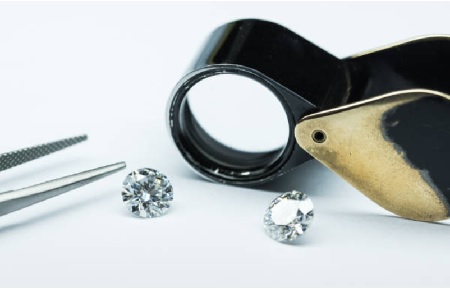
Basically, a “jeweler’s loupe” is a folding magnifying glass that features lenses between eighteen and twenty-one millimeters. Most loupes provide a standard magnification of 10X which is sufficient for various types of applications.
If you don’t already have a loupe to practice with or are considering buying one, websites like Amazon, Kassoy and Jewelry Supply are all reputable places to get something decent. For the purpose of inspecting diamonds, I recommend getting a loupe with achromatic, aplanatic triplet lens which typically cost between $20-$50.
Reasons For Using a Jeweler’s Loupe When Buying Diamond Jewery
Obviously, the main reason for using a jeweler’s loupe is to inspect the diamond for any issues related to its clarity and identity. Now, I know many people may think that having a grading report and its clarity plot would be sufficient.
Why do you still need to loupe the diamond? Well, there are a few good reasons why.
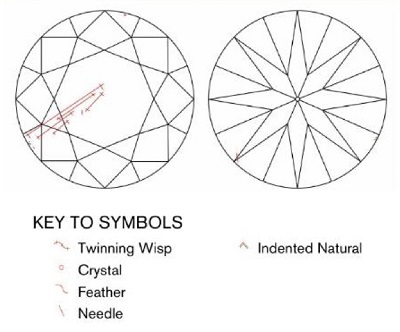
A clarity plot found in a GIA diamond grading report.
Here are some of the things that I would look out for if I were buying a diamond. If I see a feather in a VS2 or SI1 diamond being listed in the clarity plot, I want to check if the feather is surface breaking or whether it is close to the surface.
Likewise, if I see clouds and twinning wisps in the diamond, I want to know whether the cloud is dense and whether the twinning wisps are black in color. In essence, I want to perform a visual inspection of the inclusions present in any diamonds I intend to buy.
Besides clarity, you can also determine the cut quality of the stone (facets alignment and proportions) if you know how and where to look with a loupe.
For the general consumer, here are a few other reasons why learning to loupe a diamond is a useful skill. When inspecting a diamond ring under the 10X loupe, you want to get a rough idea on where the inclusions are. This will quickly tell you 2 things.
Firstly, does the diamond match up to the inclusion plot as stated in the grading report? Besides using inclusions for identification purposes, you could also check the girdle inscriptions for a laser inscription to make sure it matches up.
Secondly, once you had positively identified the inclusions within the diamond, remove the loupe and look at the diamond to see if you can spot the inclusions with your naked eye. If you can, the stone isn’t eye clean and you might want to reconsider another option.
2 Things You Need to Do Prior to Louping Jewelry
Even though it might sound obvious and unnecessary, preparing yourself and your environment prior to performing an inspection is a critical step.
First of all, you must always keep your jewelry (or specific area of interest) clean.
For example, if you are inspecting a diamond engagement ring, you should NEVER touch the diamond with your bare hands. This is because diamonds are notoriously known for being grease magnets and you cannot perform an accurate inspection with a dirty surface.
The second step is to ensure you have a proper light source that isn’t too dark or too bright. Excessively strong LED lights should be avoided as they can be too harsh on your eyes. In my opinion, fluorescent or diffused light sources are the best types of lighting for jewelry inspection.
If you are in a physical jewelry store, you might want to request the spotlighting sources to be turned down while you perform the examination. Otherwise, find a location in the store where the spot lighting isn’t blinding to your eyes.
Video Demonstration and Lesson on Using a Loupe
Basic Inspection of Loose Diamonds – With or Without Tweezers?
When done by professionals, the inspection of diamonds is usually performed using tweezers. If you are new and have no experience with handling diamonds using tweezers, try to get some practice in holding a diamond before you actually loupe it. You definitely don’t want to drop or lose an expensive diamond due to poor handling.
Using Tweezers For Handling Gemstones
Did you know that experienced jewelers never touch gemstones with their bare hands? There is a reason for this. If you are going to smudge up the stone with your fingerprints, how would you be able to tell apart the inclusions from the smudges you had just introduced?
Prior practice with the tweezers will help you gauge the right amount of force to use without straining your hands for prolonged examinations. Now, there’s something else you need to take note about. The use of excessive force with a pair of tweezers might cause the diamond to chip if it has extremely thin girdle edges or sharp pointed tips (heart and pear shapes).
For people who aren’t confident about using a pair of normal tweezers, the next best alternatives are locking tweezers or claw grip tweezers. These tools will help you keep the diamond securely in place without fear of dropping the diamond accidentally.
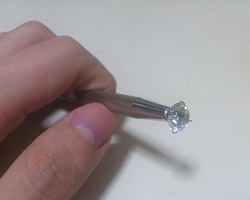
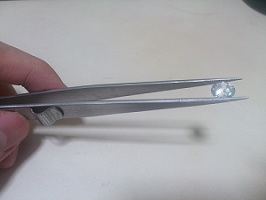
Once you are ready to perform the inspection, bring the tweezer close to your eyes and place the loupe between your eye and the diamond. I recommend that you rest the hand holding the loupe on your face so that it doesn’t wobble.
You can also tuck in your arms to your body to keep them from shaking too much. If you are familiar with photography, the concept here is somewhat similar. Basically, you want to reduce unnecessary motion.
At first, the image you see through the loupe will probably look a little blurry as the image isn’t focused. To adjust the focusing, shift the hand holding the tweezers inwards or outwards until you get a sharp image. You should be keeping your louping hand still at all times.
Once the image is in focus, check the diamond’s face up view and make a mental note of what you see. You should inspect the diamond from different tilt angles to check if you missed out any minor inclusions.
Finally, verify whatever you see against the lab report. If you see anything that appears foreign or cannot be identified, ask your jeweler for further clarification.
Isn’t a Loupe With Higher Magnification Like 20X or 30X Better?
There do exist high powered loupes and they are usually used for discerning finer details like reading laser inscriptions or identifying specific types of inclusions in a gemstone. So, if a higher powered loupe can be used for finer details, why shouldn’t you skip the 10X and go straight to 50X?
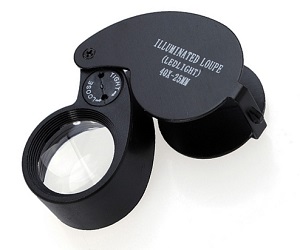
40X Illuminated Loupe – Is It an Overkill?
Unfortunately, there are certain trade-offs to using loupes with higher powered magnification. As magnification strength increases, the loupe becomes harder to use due to a shallower field of view.
Using such loupes places more strain onto the eyes as the working distance drastically decreases. For this reason, binocular microscopes are more comfortable to work with when you need to examine an object at higher magnification.
You Don’t Need a Loupe If You Shop Smart
Yes. You read that right. There’s actually no need to buy a loupe or even learn how to use a loupe if you don’t want to. That’s because retailers like James Allen and White Flash offer high definition video listings for their loose diamonds and fine jewelry.
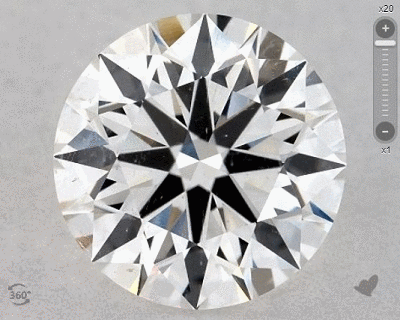
Click on this link to review the 360° video of the diamond above.
In fact, you get to see far greater details in a neutral environment compared to what you would with a traditional loupe. On top of that, your interaction with the diamond or jewelry can be done at the comfort of your home and away from sales pressure in a retail store.
If you asked me, it’s a much better way to shop for diamonds and you also get to cherry pick the best diamond out of a massive inventory. To put the icing on the cake, vendors like James Allen and White Flash offer 100% money back guarantees and your purchase is completely risk free.

Interact with diamonds and inspect the smallest details without the need to use a physical loupe.
Related Articles
Leave A Comment

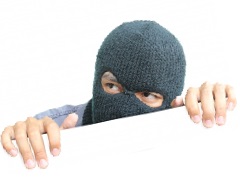


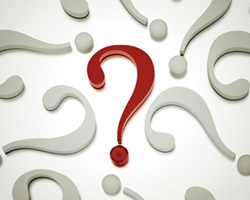









12 Comments
wonder if they have available tweezers with nylon imbedded tips to further prevent you from damaging a stone?
Stainless steel tweezers will not damage a diamond. No worries there.
Could you please let me know as to how you had gained such knowledge about diamonds??
Could you please point to some resources or courses I may pursue??
You are looking at the best diamond resource on the Internet now. No joke!
If you are looking for professional courses, start with GIA’s Diamond Graduate program.
Bring it back to your jeweler for an assessment.
This page seems interesting.
Is there any method to use less strain to eyes while using the loupe to looking a diamonds.
I am getting such strain to my eyes
Open both your eyes when using the loupe. This should relive strain in your eyes.
I keep coming back for more
This info is great. I say do not buy a diamond “dumb.” Thank you.
how can you tell a diamond from a fake when using the loupe?
Short answer: Experience.
Long answer: Different types of simulants have different optical characteristics and inclusions.
should you get a loupe with a light?
If the light helps (I personally find fluorescent lighting from built in loupes useful), then by all means go for it. With lighting, you may find reading inscription numbers to be easier.